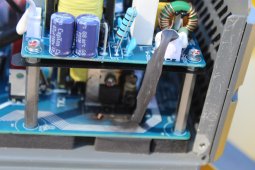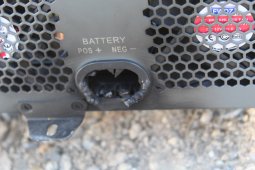Endsofearth
New Member
- Joined
- Jun 25, 2022
- Messages
- 22
EG4 3000 EHV-48 fire. Been running a 12 panel system with 2 EG4-lifepower batteries and the EG4 3000 EHV-48. Added the battery rack and 3rd battery4 days ago, charge got up to 91% each day but stopped there. Today we had more sunlight and charge was up to 95% at 1pm and at 2 was still at 95% when I checked it. I was near when I heard a loud POP and saw smoke coming out of EG4 unit. Error code 13 (over current or surge) . shut off switch, shut off panels, ran for fire extinguisher, when I got back battery cables under EG4 were also on fire. Smothered fire with CO2 (not the best for electrical fires). Shut off batteries and put out fire again. My panels are Q Peak duo blk-G5 310
310 watts
Short circuit amps9.83
Open circuit voltage 40.2
current at max power 9.36
Voltage at max power 33.12
max system voltage 1,000
EG4 is burned inside at top left corner and battery cables right below where they enter unit.
What caused this?
Any ideas? I was looking to add more panels (arriving Monday) and another EG4 Not ordered yet. Should I upgrade? Right now we are only running an RV Fridge, 2 laptops, water pump 5 min every 3-4 hours. and a few chargers, Ryobi cordless, weather station.
310 watts
Short circuit amps9.83
Open circuit voltage 40.2
current at max power 9.36
Voltage at max power 33.12
max system voltage 1,000
EG4 is burned inside at top left corner and battery cables right below where they enter unit.
What caused this?
Any ideas? I was looking to add more panels (arriving Monday) and another EG4 Not ordered yet. Should I upgrade? Right now we are only running an RV Fridge, 2 laptops, water pump 5 min every 3-4 hours. and a few chargers, Ryobi cordless, weather station.





